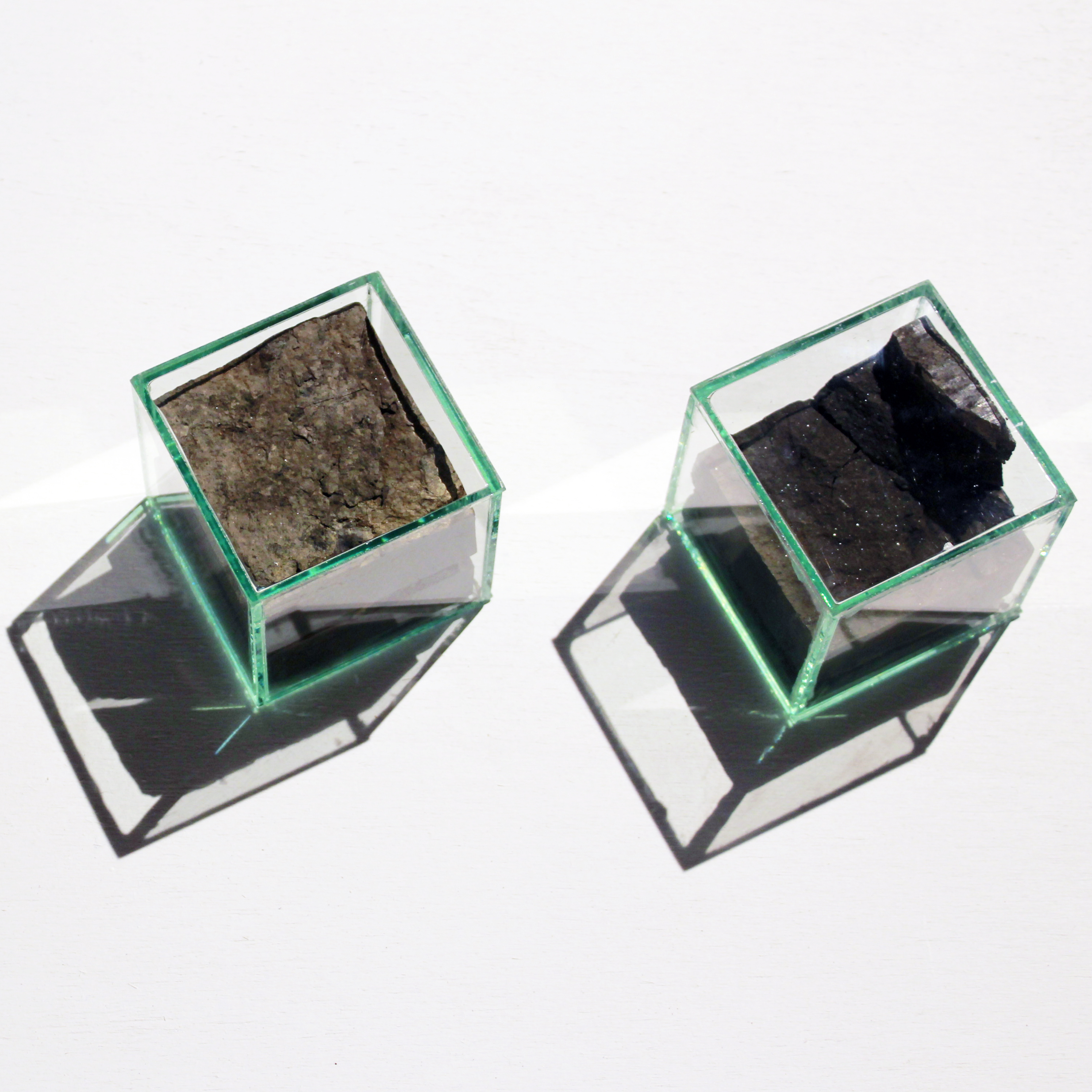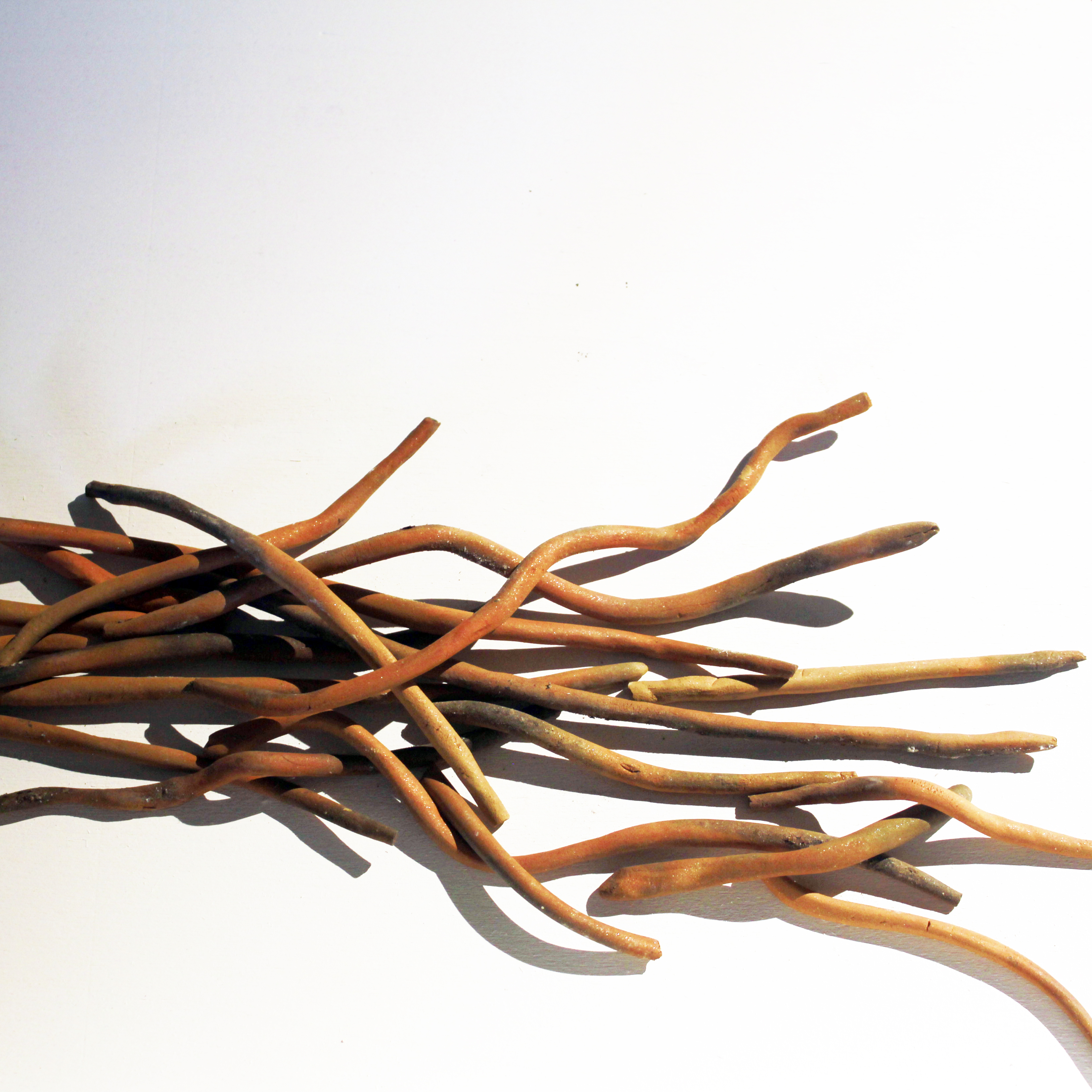UNÆNTRHOPIC DEVICES
2021, Ongoing
installation

Entropy is a quantity that is interpreted as a measure of the disorder of a system. At various levels tends to apply the simplification that a system is naturally inclined to increase its entropy, meaning it is naturally inclined to increase its degree of disorder. Another way to describe the concept of entropy is to say that energy degrades, or moves from more usable forms to less usable forms.
Most of the anthropic activities, tend to use energy -degrading- to fight the general entropy of the universe, in an attempt to order things. An unconsciously paradoxical action.
Unæntrhopic devices is a series of experiments that refer to this paradox in an attempt to build objects-order matter, consume energy- to highlight the
anthropic effects that degrade reality and the ecosystem we inhabit. They are therefore objects that express the illusory will to be un-entropic and un-anthropic.

#1 Paradigm (glass cubes, fossil wood)
Paradigm consists of 5 glass cubes that isolate fossil wood of plants that lived between 2 and 5 million years ago, a scale immeasurable compared to the human one. They testify to the distance between reality and our ability to understand, imagine, inhabit and represent it. Thomas Kuhn, American philosopher, described the development of scientific progress as a juxtaposition of irreconcilable models, called incommensurable paradigms. Advancement proceeds by 5 successive stages in which one theory emerges, encounters a crisis, and is then abandoned for a new one. However, it is not necessarily the best or “truest” model that is chosen, but the one that most captures the interest of scientists. The choice of paradigm is therefore based on socio-psychological grounds.
Paradigm provides at the same time evidence of entities and events that are not really understandable yet surround humans -such as a temporality of millions of years- and an invitation to consider possible narratives of reality that consider entities and metrics that differ from human ones.

#2 Undecaying pebbles (raw clay and pebbles)
Undecaying pebbles depicts a double impossibility. Pebbles are embedded in a clay cover polished with the practice of Japanese dorodango.
In natural geological evolution, stone eroded by the river and polished by water continues its decay until becoming soil, sand or clay. The same clay retrieved from the stream that is used here as a coating in an attempt to preserve a pebble inside over time. The durability and effectiveness of this operation -and therefore its possibility- is uncertain. Similarly, it is very difficult to produce an intact dorodango that is not composed of clay alone.

#3 Fluctuation (baked clay, iron wire)
The matter we usually see and touch is not as solid as it appears to us. At the microscopic level, below the atom, quantum physics tells of a foam, a discontinuous structure of space-time formed by micro-regions in continuous evolution dictated by quantum fluctuations, the geons. From these fluctuations structures emerge that combine forming the matter that we perceive as solid.Fluctuation relates the fluctuating nature of matter with the constant movement of the stream, solidifying strings of clay taken from the same stream of which the clay is a mixture of the most minute particles (water and phyllosilicate minerals).